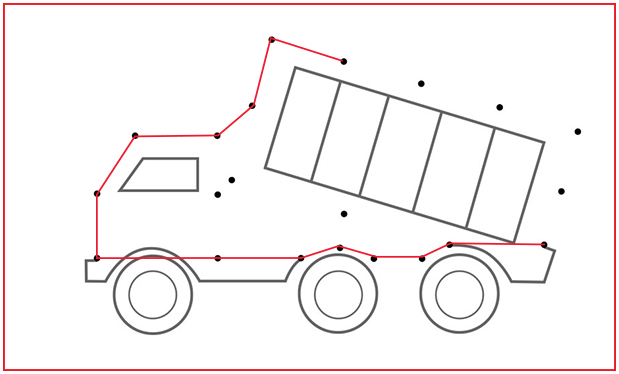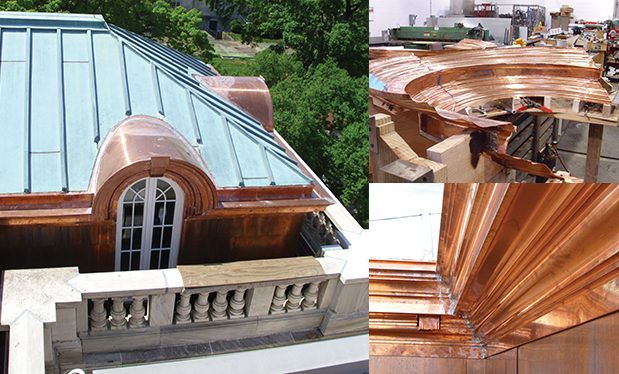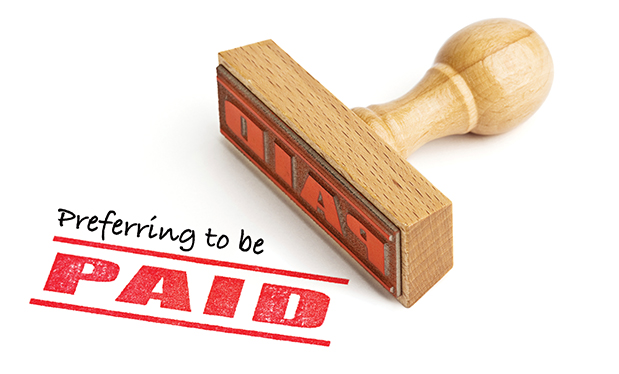As commercial (low-slope) roofing contractors, we operate within what the Bureau of Labor Statistics deems the fourth most dangerous occupation based on fatality statistics. At Castro Roofing, Dallas, we recognize the risks and emphasize safety always will be at the top of our company's agenda.
We have developed a safety culture that's permeating throughout our company and keeping our insurance premiums at record lows. We don't believe safety measures make us any less agile or negatively affect our bottom line. In fact, we've observed developing a strong safety culture has had the greatest positive effect on accident reduction and project management, and it ultimately saved our company more than a quarter-million dollars during the past year. Safety is a priority for us, and the monetary savings are an additional benefit.
The following are some successful safety measures we strategically have implemented over the years that may help your company become a safer workplace for your employees.
EMRs as an indicator
Since 1990, Castro Roofing has been building a history of avoiding accidents, fatalities and potentially detrimental situations. Although no safety program can be perfect, our proactivity in our safety measures has paid off in the form of experience modification rates (EMRs) that lower our workers' compensation premiums.
For companies that generate qualifying premium levels (the levels vary state to state, typically $5,000 to $15,000), an EMR is a good indicator of a contractor's claim history and can significantly affect a business's annual workers' compensation premiums. These rates can be lower or higher depending on a business's claim experience in any applicable three-year period. Keeping safety as your first priority certainly can effect a lower EMR in the U.S.' fourth most hazardous profession.
The plethora of yearly falls, injuries and fatalities accounts for the roofing industry's harsh history with insurance companies. In 2008, though the industry as a whole experienced some dire numbers, Castro Roofing maintained a low EMR, sparking the idea that instituting more proactive measures could help us keep a lower EMR. We set out on the following initial three-step plan to reduce accidents and claims:
- Plan in advance and for any special safety issues.
- Provide the necessary equipment and job tools.
- Train everyone for workplace safety and how to use equipment safely.
The Occupational Safety and Health Administration's (OSHA's) most comprehensive data from 2013 easily could deflate the confidence of any roofing professional expecting lower industry insurance premiums, but it emphasizes business owners' responsibility to take ownership for doing everything they can to maintain safe workplaces. In 2013, there were 828 construction industry fatalities of which 80 fatalities were reported from roofing companies. Falls were the leading cause of construction and roofing deaths, so we brainstormed several methods to combat these statistics. One method included developing a work-site culture of safety from the top down.
Safety from the top
Our safety culture starts at the top of our organizational chart where an Executive Safety Committee composed of our company's owner and CEO, human resources department, full-time safety manager, safety consultant and insurance broker work together to keep our safety plan scalable, relevant and better than OSHA's minimum requirements.
The Executive Safety Committee evaluates all projects to determine any distinct project's specific needs and requirements when estimating a job. The safety manager reports directly to the CEO, adding a high level of accountability that trickles down throughout the on-site production teams.
The on-site production and service teams are required to attend monthly safety meetings and training addressing companywide best-safety practices in addition to OSHA regulations. As a small business, we also have the opportunity to involve our employees in safety dialogue that typically may seem more appropriate only for management. However, in our case, the dialogue helps our technicians understand we're not dictating rules; we are ensuring their daily safe return home to their loved ones. We have found inclusion-created buy-in works well to build strong team ties and accountability for one another, establishing roofing crews that truly value the position their company is taking toward safety.
We believe our technicians appreciate the safety culture we are developing, and their increasing awareness on-site reflects their commitment to the best safety practices on every project. We encourage healthy safety-driven dialogue during meetings and recognize employees with gold hard hats for making valuable contributions toward our growing safety program. We have found rewarding employees with a bonus can hurt safety because employees tend to hide injuries or not report near-misses if money is involved. Instead, we provide gold hard hats for employees to wear in front of fellow employees to reflect their dedication to safety, and this system is working well.
For us, delivering safety is no different from our focus on delivering the highest quality service. We internally grade ourselves on safety just as we grade ourselves on project completion, craftsmanship and customer service. However, in this case, poor safety grades equate to fewer customers and higher insurance premiums across the board (general liability, vehicle and workers' compensation).
Professional development 2.0
In addition to cultivating a culture of safety from the top down, we have a great focus on professional development. How do we garner buy-in? Can we simply institute safety? Is it a command? Or is it a much higher cognitive function that lives beyond working hours?
It sounds more complicated, but the beauty of buy-in is simpler than you may imagine—we keep our employees engaged in the safety conversation. Not only do we include our service teams in the creation of procedures, policies and repercussions that will affect them every day, we help them knowledgably assimilate into our various teams.
Through our automated online project management (OPM) software, we can surpass human error by automating tasks and creating safety road maps that transform prospects into great employees. We have a campaign that triggers initial emails, skill-based courses, surveys and onboarding educational videos that must successfully be completed before deeming an employee a viable candidate for field projects.
By automating these tasks, we ensure there is a system in place and data that displays each employment prospect or new employee's status at any given time. Automated onboarding is the way of the future, and with the right software, businesses can transform their human resources efforts.
Castro Roofing also offers its employees classes that teach fall protection, first aid, defensive driving and OSHA topics. We make sure to teach most of the classes on an annual basis and provide refresher courses. This year, we also will be putting together some simulation classes and safety drills so everyone in the office and in the field knows exactly what to do in an emergency.
4DX
Castro Roofing also has implemented a regimen based on The 4 Disciplines of Execution (4DX): Achieving Your Wildly Important Goals, written by Chris McChesney, Sean Covey and Jim Huling. The following four disciplines are described in 4DX:
- Focus on the wildly important
- Act on lead measures
- Keep a compelling scoreboard
- Create a cadence of accountability
In 2014, 4DX was implemented companywide. We implemented wildly important goals to ensure all departments have three actionable items at any given time that, when completed, will directly increase our bottom line.
Our safety department progressively is working toward excellence by choosing to incorporate the practice of setting three wildly important achievable goals, acting on the measures most likely to increase those goals while keeping accurate departmental scoreboards that always show employees where the department stands at any given moment.
Our safety department started its goal with 88 percent compliance. This year, the department set a wildly important goal to achieve a safety audit compliance of 90 percent by Dec. 31, 2015. As of April, we have exceeded our goal by about 3 percent, which should lower our company's premiums even more when this year is calculated into the EMR formula.
Our safety department's wildly important goals routinely are emphasized, but the clearest case is best presented as a result of its goals for performance and commitment to safety during our Dallas City Performance Hall project.
Dallas City Performance Hall
In 2014, safety took center stage when the prestigious Dallas City Performance Hall project called for the longest Kalzip® mechanically seamed, aluminum-plus, zinc-coated panel installation in North America.
The Dallas City Performance Hall is a 70,000-square-foot, 750-seat professional theater located in the renowned, 68-acre Dallas Arts District. The hall features a 25,000-square-foot roof system with Kalzip AluPlusZinc 65/400 continuous panels in varying lengths that posed a tremendous challenge in the form of installing 306-foot-long panels near the bustling avenues of downtown Dallas.
It is one thing to install metal panels atop a 50-foot, custom-engineered marvel; however, there are significantly more challenges that come with installing North America's longest continuous standing-seam panels without a loss in craftsmanship or safety assurance. Not to mention underperforming on a project of this size would have had detrimental effects on our premium modifier, so this called for all safety managers to oversee different portions of the project.
The panel length presented particular safety and logistical challenges that we were more than prepared to tackle as all issues were discussed during critical planning stages.
This job required us to close roads around 3 a.m. to allow the necessary space for the panels' fabrication—the panels easily stretched through the job site and out into the street. There were so many moving pieces to this project, yet proactive training and preparation allowed us to complete it without a hitch or hiccup.
The Dallas City Performance Hall is a prime example of how creating a culture of safety yields return on a safety investment. The longest panels were more than 300 feet of continuous sheet metal, and each panel had to be manually lifted by 20 men on the roof and 20 men on the ground. Coordination of safety measures was key. Our 100 percent tie-off rule never was compromised, and we performed our installation with excellence.
As a result of implementing the wildly important safety goals we set for the Dallas City Performance Hall, zero accidents were reported, the project was completed on time, and we tacked another accomplishment on our scoreboard that works toward our stellar safety record rather than against it. In addition, Castro Roofing won a 2014 NRCA Gold Circle Safety Award and a Gold Circle Awards honorable mention in the Outstanding Workmanship: Steep-slope category.
Toolbox safety training
A successful safety plan wouldn't be complete without toolbox safety training. Castro Roofing's weekly on-site toolbox safety training meetings encourage foremen to take the lead by administering the meetings and making recommendations about upcoming portions of a project that may affect the entire team.
Foremen are managed and guided through this process by our safety manager, and it's been our experience this investment in our foremen prepares them for the potential of being promoted and reinforces job-site accountability. Leaders understand the importance of accountability and the tremendous value accountability has within management. On-site safety training conversations not only substantially increase employee alertness, but they also help cultivate a crew of thinkers, leaders and executors.
Our safety manager holds toolbox safety training sessions throughout the duration of each project. In the case of the Dallas City Performance Hall, the toolbox safety trainings were documented and photographed, as well. Our third-party safety consultant works with our safety manager and Executive Safety Committee to ensure job-specific safety precautions are implemented without fail. When it comes to the safety of our crews, there is no compromise.
The following are a few important toolbox safety training discussion items we keep in our safety toolbox:
- OSHA safety standards review
- Urban environment safety requirements
- Scaffolding
- Hand tools
- Eye protection
- Personal protection equipment
- Hard hat safety
- Back-injury protection
- Reviewing horseplay policy (zero tolerance)
- Hazard communication
LOOKOUT™ for safety
In the past, we were inclined to adapt our processes to match what we felt was right. In 2014, we decided to make changes based on actionable data through a proprietary OPM software solution called LOOKOUT.
LOOKOUT has allowed our company to evolve and adapt to a mobile-driven environment with a particular focus on safety assurance. In the old days, we had to rely on the word of our trusted foremen with the potential risk for human error to occur either in the on-the-roof execution or, worse, in the foreman's individual understanding of best practices.
Now, we can require foremen to archive photos and information for every project every day. The ability to force the capture of photos to prove each safety measure has been executed appropriately is an ultimate game-changer.
We receive dozens of site photos every day, allowing us to evaluate safety on a job site in real time. This technology has created crews of workers who are accountable and knowledgeable, and they all seem to have a greater respect for the craftsmanship required in their jobs, as well as the safety precautions necessary to facilitate excellent work. This has changed our administration's expectations, as well. We understand actionable data and make decisions according to the numbers.
LOOKOUT has been our company's secret weapon in the fight for 90 percent safety compliance. Since its implementation, we already have exceeded our goal of 90 percent compliance, and now we have plans to achieve 100 percent compliance in the near future.
The cost of inaction
The costs of neglecting fall protection far exceed the costs of insurance and fall-protection programs. At Castro Roofing, not only are we concerned with safety now, but we actively ask ourselves: What are we going to do about fall protection in the future?
The average cost of inaction is inconceivable. Funerals, loss in productivity, workers' compensation payments and social losses are among the most expensive for any type of company. The National Council on Compensation Insurance cites the average cost of an injury is about $106,000, and if you include lost time and other incurred costs, that total is far more than $250,000 per injury—this doesn't include the costs of increases in insurance premiums.
We'd much rather pay the costs for safe environments, well-trained employees, professional development and accountability than pay the cost of inaction. We also value having crews that care just as much about their craftsmanship as we care about their safety. We support one another from the boardroom to the work site.
Over the years, Castro Roofing has been on a winning streak by keeping safety as our company's core value and adapting with the times. We don't jump from bandwagon to bandwagon, attempting to outsmart OSHA because our company's safety culture starts where OSHA's minimum regulations end. The baseline isn't good enough for our people, our clients or our company. We will continue to invest in OPM tools that help us save lives, avoid danger whenever possible and develop our crews into industry-leading metal masters of best practice.
Implementing effective safety measures, such as those we've implemented at Castro Roofing, can help your company develop a strong safety culture, make your roofing company more agile and positively affect your bottom line.
Rudy Rodriguez is co-owner and CEO of Castro Roofing, Dallas.



